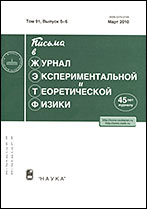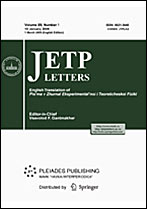|
This article is cited in 1 scientific paper (total in 1 paper)
CONDENSED MATTER
Inverse Faraday effect in superconductors with a finite gap in the excitation spectrum
A. V. Putilova, S. V. Mironova, A. S. Mel'nikovab, A. A. Bespalova
a Institute for Physics of Microstructures, Russian Academy of Sciences, Nizhny Novgorod, 603950 Russia
b Moscow Institute of Physics and Technology (National Research University), Dolgoprudnyi, Moscow region, 141701 Russia
Abstract:
The inverse Faraday effect (generation of a time-independent magnetic moment under the action of a circularly polarized electromagnetic wave) in mesoscopic superconducting samples with a finite gap in the excitation spectrum is analytically described. Within the modified time-dependent Ginzburg–Landau theory (Kramer–Watts-Tobin equations) for thin superconducting disks, it is shown that the temperature dependence of the optically induced magnetic moment is nonmonotonic in a wide range of parameters and contains a maximum. This maximum is due to the dephasing between the spatial oscillations of the magnitude and the phase of the order parameter, which arises with a decrease in the temperature and, correspondingly, in the characteristic relaxation time of perturbations in the superconducting condensate.
Received: 30.03.2023
Revised: 17.04.2023
Accepted: 17.04.2023
Citation:
A. V. Putilov, S. V. Mironov, A. S. Mel'nikov, A. A. Bespalov, “Inverse Faraday effect in superconductors with a finite gap in the excitation spectrum”, Pis'ma v Zh. Èksper. Teoret. Fiz., 117:11 (2023), 832–839; JETP Letters, 117:11 (2023), 827–833
Linking options:
https://www.mathnet.ru/eng/jetpl6956 https://www.mathnet.ru/eng/jetpl/v117/i11/p832
|


| Statistics & downloads: |
| Abstract page: | 69 | | References: | 22 | | First page: | 8 |
|





 Contact us:
Contact us: Terms of Use
Terms of Use
 Registration to the website
Registration to the website Logotypes
Logotypes








 Citation in format
Citation in format 
